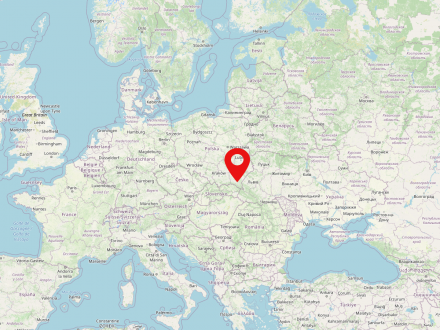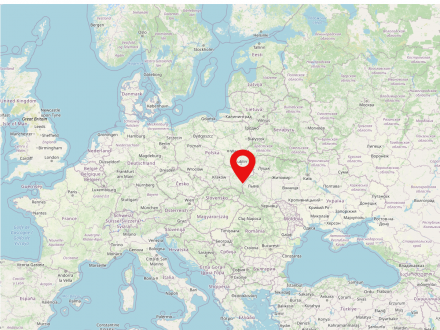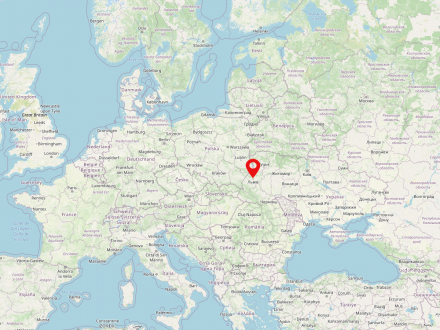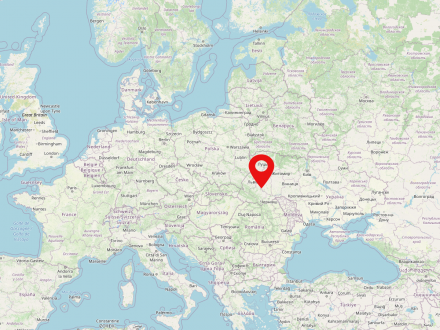Kievan Rus' came into being when in the 9th century Scandinavian long-distance merchants and warriors, the Varangians, established bases along the river systems of Eastern Europe and subsequently mixed with the elites of the resident East Slavic population. It was a union of (partial) principalities with Kiev at its head. In the 11th and 12th centuries, Kievan Rus encompassed an area between Galicia and Volhynia (Halyč and Volyn’) to the southwest, Polock to the west, Novgorod to the northwest, Vladimir-Suzdal' to the northeast, and Kiev to the south.
The principality of Galicia-Volhynia was formed around 1200 as an independent part of Kyiv Rus'. It continued to exist beyond the Mongol expansion as an independent political dominion until the 14th century.
The Golden Horde was a Mongolian empire that came into being in 1236 under Khan Jötschi. The khans of the Golden Horde acted relatively autonomously from the Mongol Empire, of which the Golden Horde was formally a part until 1368. The Golden Horde ruled in Eastern Europe over the Principals of the Rus, who were tributary but also accountable to the Golden Horde. The Golden Horde's domain stretched from present-day Pakistan and the foothills of the Himalayas to present-day Hungary and Bulgaria.
The territory of the Grand Duchy of Lithuania was settled by Baltic Lithuanians as early as the 11th century. These different "tribes" formed the Grand Duchy in the 13th century. The expansion of the Grand Duchy was mostly positioned to the east, as the Teutonic Order blocked the access to the Baltic Sea from the 13th century. In 1320, Grand Duke Gediminas conquered Kiev. From 1386, the Grand Duchy was under the same ruler as the Polish Kingdom (personal union) in order to be able to assert itself against the strengthening Teutonic Order in the region. In 1569, Poland and the Grand Duchy of Lithuania also became unified states.
The Kingdom of Hungary (Magyar Királyság) existed in changing borders since the year 1000. Already in the early modern period it fell to the Habsburg Monarchy, in which it later became the most important of the so-called Lands of the Hungarian Crown (also Lands of the Holy Hungarian Crown of St. Stephen or, after 1867, also called the Hungarian half of the Empire). Unlike other Habsburg territories - such as the lands of the Bohemian Crown or the Archduchy of Austria itself - the Kingdom of Hungary never belonged to the Holy Roman Empire.

In the Middle Ages, Sanok was considered the "gateway to Hungary", guarded by castles of different construction periods. Sanok belonged to the Kievan Rus until the 12th century, when it was conquered by the Hungarians. From the 14th century, the town adopted Magdeburg town rights, and from the middle of this century, it belonged to the Kingdom of Poland.
Przemyśl is strategically located between the Western Carpathians in the south and the Roztocze in the north. At the same time, in the Middle Ages, the town was located on the Via Regia. It is likely that a settlement on the territory of today's Przemyśl existed already in ancient times. From 1379, Przemyśl possessed the Magdeburg town charter under the Polish crown. After the first partition of Poland (1772) the town fell under the rule of the Habsburg monarchy and subsequently became the seat of the district authority of Przemyśl.
Lviv (German: Lemberg, Ukrainian: Львів, Polish: Lwów) is a city in western Ukraine in the oblast of the same name. With nearly 730,000 inhabitants (2015), Lviv is one of the largest cities in Ukraine. The city was part of Poland and Austria-Hungary for a long time.
Due to the war in Ukraine, it is possible that this information is no longer up to date.
Halich has existed as a settlement on the banks of the Dniester likely since the 10th century. In the 12th century, the castle is mentioned for the first time. Halich was the center of the principality of Halich-Volhynia. In 1240, the city was burned down by the Golden Horde. From 1367, Halich possessed the Magdeburg town charter under the Polish crown. The administrative unit of the Halich Land was part of the Ruthenian Voivodeship from 1569 to 1772. The town of Halich became famous because it gave its name to an entire Eastern European region, as Galicia is called "Halytschyna" in Ukrainian. The town has a ruined castle that is still visible today, perched on a steep rock overlooking the town centre.
The last decades of the 14th century saw a number of turbulent constellations of rulers in the Kingdom of Poland. After the death of Kazimierz III of the Piast dynasty in 1370, the crown passed to the Hungarian king Louis of Anjou. His daughter Jadwiga succeeded him in Poland in 1384. The following year she married the Grand Duke of Lithuania, Jogaila, which ultimately resulted in a personal union of the two kingdoms. As king Władysław II. Jagiełło, he founded the dynasty of the Jagiellonians, which was to leave a lasting mark on the political map of eastern Europe for centuries to come. The southwestern territories of Rus' were then reconquered for the Polish crown by Jadwiga and Jagiełło from 1387 after a brief period of Hungarian rule. However, they only became a regular voivodeship between 1430 and 1434 and remained so until the partitions of Poland-Lithuania at the end of the 18th century. 3
The areas, partly depopulated as a result of numerous Tartar invasions, offered newcomers from East and West excellent opportunities for social advancement. Families settled here mainly from Lesser Poland, but also from Silesia and Bohemia as well as from Podolia or Lithuania. At the same time, the respective rulers used the region to reward their entourages with land and wealth, and thus to secure their loyalty. Among other things, this took the form of various kinds of land allocation via fiefdoms and pledges, which were also widespread in other areas of Europe. The region thus opened up opportunities for development and influence for both sides, although this was not without conflict. For example, the nobles who lived here now strove for legal equality with their neighbors in other areas under crown rule. However, this was only possible by adapting to the conditions in Poland, for example, converting to the Latin Christian faith or adopting the Latin written language. Thus, the pressure to assimilate was not a result of a program decreed by the "authorities," but of a complex interaction of social and political factors that only gradually unfolded. Nevertheless, various regional characteristics, such as the presence of Ruthenian as a legal language, persisted well into the 16th century. Likewise, the practice of giving oral testimony in court – as was common in the era of the principality – remained highly significant even in the context of a broadly text-based and regulated administration.

However, we should not assume that the division of the population into Armenians, Jews and Latins was based on rigid ethnic categories to which people belonged by birth. Rather, such legal and religious categories sometimes offered individuals astonishing leeway. An Armenian merchant could certainly slip under the umbrella of Saxon-Magdeburg law if he considered this advantageous for his business. The same was true for Ruthenian peasants, who might have expected better working conditions from another landlord. The conflicts did not become more frequent until the end of the 15th century, when the Ottoman expansion on the Black Sea made once lucrative commercial operations more difficult and led to increased struggles around distribution. Religious difference then became above all a rhetorical weapon, as it had been in the context of the conquest, and could be used for promising effect.












